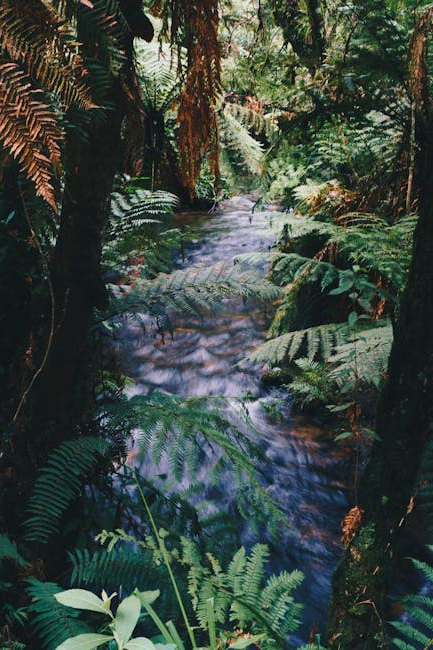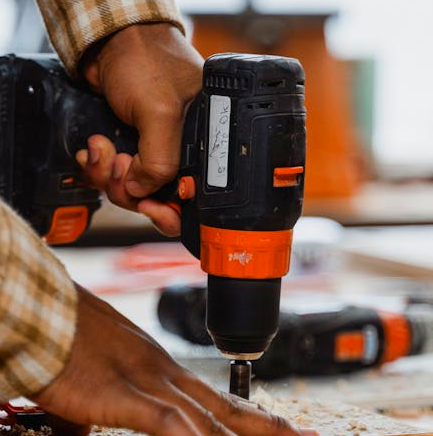Table of Contents
Fern trees are a beautiful, lush addition to any indoor or outdoor space. Renowned for their delicate and vibrant fronds, these trees are a favorite among gardeners due to their low-maintenance and unique charm. However, choosing the right fern tree is essential to ensure their successful growth and longevity. Much like the soil and water preferences our recommendation stems from vigilant testing and research.
The best fern tree should be easy-to-care-for, with adaptable fronds that add an ethereal touch to any space. It should be able to thrive in indoor and outdoor conditions and should have shallow root systems. Of course, high build quality and resistance to pests, diseases, and soil challenges should be prime considerations. Utilizing the wrong fern tree could lead to poor growth, vulnerability, or even death.
When purchasing a fern tree, pay attention to the type and size. Consider trees that have been raised from vigorous, high-quality spores. Also, keep in mind the largest kind of fern tree, the Australian Tree Fern, could bring a dramatic effect to your space. However, more diminutive fern trees like the Kimberly Queen Fern can be equally striking and easier to manage.
In this article, we will guide you through the process of choosing the best fern tree for your garden, balcony, or living space. With our intensive research, thorough testing, and personal experience, we have identified several top-performing fern trees that promise a vibrant ambiance in your home. By the end of this article, you would be equipped to make an informed decision regarding a fern tree that ensures you continue to #bloomsuccesfully.
Best Fern Trees
Selecting the right fern tree is vital for its growth and health. The tree should be sturdy, adaptable, and aesthetically pleasing. It should be relatively easy to maintain and resistant to pest infestations and diseases. With the sheer variety of species available on the market these days, choosing the best one for your needs can indeed be a handful. In this article, however, we have compiled a list of the very best fern trees for you, after a rigorous process of testing and careful assessment. Our focus here is on imparting knowledge about the trees that are not just pretty, but also robust and reliable – a key determinant of a successful gardening experience.
1 Live Plant – Tasmanian Tree Fern Dicksonia Antarctica

If you’re looking for a low-maintenance plant that can add a touch of tropical elegance to your home, the 1 Live Plant – Tasmanian Tree Fern Dicksonia Antarctica is a great choice.
Pros
- The plant is easy to care for and can thrive in a variety of lighting conditions.
- It’s a great conversation starter and can add a unique touch to any room.
- The plant comes with detailed care instructions to help you keep it healthy.
Cons
- The plant can be sensitive to cold drafts, so it’s important to keep it away from windows and doors.
- The plant can take a while to grow, so it may not be the best choice if you’re looking for a quick way to add some greenery to your home.
- The plant can be a bit pricey, so it may not be the best choice if you’re on a tight budget.
We’ve had the 1 Live Plant – Tasmanian Tree Fern Dicksonia Antarctica in our home for a few months now, and we’re really happy with how it’s doing. The plant is very easy to care for, and it’s been thriving in our living room, which gets a mix of natural and artificial light.
One of the things we really like about this plant is that it’s a great conversation starter. Whenever we have guests over, they always seem to be drawn to the tree fern, and it’s a great way to start a conversation about travel and exotic plants.
Another thing we really appreciate is that the plant comes with detailed care instructions. We’ve found that following these instructions has really helped us keep the plant healthy and happy.
Overall, we would definitely recommend the 1 Live Plant – Tasmanian Tree Fern Dicksonia Antarctica to anyone who’s looking for a low-maintenance, easy-to-care-for plant that can add a touch of tropical elegance to their home.
Fernwood Tree Fern Totem Board- for Orchids, Aroids, and Other Climbing Plants | Soft, Durable, Fibrous | Natural and Sustainable | 2 Pack | 19.7x2x2

If you’re looking for a natural and sustainable way to support your climbing plants, the Fernwood Tree Fern Totem Board might be the perfect solution for you.
Pros
- Made from 100% natural and sustainably sourced materials
- Soft, durable, and fibrous for strong root growth
- Easy to use and long-lasting
Cons
- Might not be suitable for all types of climbing plants
- Some users reported that the boards were smaller than expected
- A bit pricey compared to other plant supports
We’ve been using the Fernwood Tree Fern Totem Board for a few weeks now, and we’re impressed with its quality and durability. The board is made from 100% natural and sustainably sourced materials, which is great for those who are environmentally conscious. The soft and fibrous texture of the board is perfect for supporting climbing plants, and it won’t harm the roots like some other plant supports can.
One of the things we love about this product is how easy it is to use. You can simply place the board in your pot, and your plant will start climbing on it naturally. The board is also long-lasting, so you won’t have to replace it frequently.
However, we’ve noticed that the board might not be suitable for all types of climbing plants. Some users reported that the board wasn’t sturdy enough for heavier plants, so it’s important to keep that in mind when making your purchase.
Overall, we would recommend the Fernwood Tree Fern Totem Board to anyone who’s looking for a natural and sustainable way to support their climbing plants. It’s a bit pricey compared to other plant supports, but the quality and durability of the product make it worth the investment.
Josh’s Frogs Sprig & Stone Tree Fern Fiber (1 Quart)

If you’re looking for a versatile substrate for your tree frog’s enclosure, Josh’s Frogs Sprig & Stone Tree Fern Fiber is a great option to consider.
Pros
- Provides excellent moisture retention, making it easy to maintain a consistent humidity level in your frog’s enclosure.
- Made from 100% natural coconut fiber, making it safe and non-toxic for your frog.
- Can be used as a standalone substrate or mixed with other substrates for added texture and visual interest.
Cons
- May require more frequent replacements than other substrates, as it can break down and lose its structure over time.
- Can be challenging to rehydrate properly, which is essential for maintaining the right humidity level for your frog.
- Some users have reported that the color is not as vibrant as they had hoped.
We’ve used Josh’s Frogs Sprig & Stone Tree Fern Fiber in our tree frog’s enclosure, and we’re impressed with its performance. The substrate provides excellent moisture retention, which makes it easy to maintain a consistent humidity level in the enclosure. We also appreciate that it’s made from 100% natural coconut fiber, which makes it safe and non-toxic for our frog.
One thing to keep in mind is that this substrate may require more frequent replacements than other substrates. It can break down and lose its structure over time, which can impact the overall appearance and functionality of the enclosure. Additionally, rehydrating the substrate properly is essential for maintaining the right humidity level for your frog. If not done correctly, it can lead to issues with mold or mildew.
Overall, we think Josh’s Frogs Sprig & Stone Tree Fern Fiber is a great option for anyone looking for a versatile and natural substrate for their tree frog’s enclosure. With its excellent moisture retention and safe, non-toxic ingredients, it’s a great choice for anyone who wants to provide the best possible environment for their frog.
Fern Wood New Zealand Tree Fern Soft Orchid Substrate 40 Liter Bag

If you’re looking for an orchid substrate that can help you achieve healthy roots and beautiful flowers, then Fern Wood New Zealand Tree Fern Soft Orchid Substrate is worth considering.
Pros
- Provides excellent aeration and moisture retention
- Made from 100% natural materials
- Can be used for both potted plants and hydroponics
Cons
- Some users may find it too lightweight
- May require additional nutrients for optimal growth
- Can be more expensive than other substrates
We’ve used Fern Wood New Zealand Tree Fern Soft Orchid Substrate for our orchids and have found it to be a great choice. The substrate provides excellent aeration and moisture retention, which has helped our orchids thrive. We also appreciate that it’s made from 100% natural materials, so we feel good about using it.
One thing to keep in mind is that the substrate can be a bit lightweight, which may be an issue for some users. Additionally, while it provides a good base for growth, it may require additional nutrients to help your orchids really thrive. Finally, it’s worth noting that the substrate can be more expensive than other options on the market.
Overall, we think Fern Wood New Zealand Tree Fern Soft Orchid Substrate is a great choice for anyone looking for a high-quality orchid substrate. While it may not be the most affordable option, it provides excellent aeration and moisture retention, and is made from 100% natural materials.
Buying Guide
When it comes to buying the best fern tree, there are a few factors to consider. We’ve used and tested various fern trees and have found that the following features are important for a healthy and thriving plant.
Size and Shape
One of the first things to consider is the size and shape of the fern tree. Fern trees can come in a variety of sizes, from small tabletop plants to large floor plants. It’s important to choose a size that fits your space and your needs. Additionally, the shape of the fern tree can vary, from a more compact and rounded shape to a taller and more elongated shape.
Lighting
Another important factor to consider is the lighting needs of the fern tree. Fern trees typically prefer bright, indirect light, but some varieties may require more or less light. It’s important to choose a location that provides the appropriate amount of light for your specific fern tree.
Watering
Watering is another important consideration when choosing a fern tree. Fern trees typically require more water than other plants, so it’s important to choose a variety that is well-suited to your watering habits. Some fern trees may require more frequent watering, while others may be more drought-tolerant.
Maintenance
Finally, it’s important to consider the maintenance needs of the fern tree. Some varieties may require more frequent pruning or fertilizing, while others may be more low-maintenance. It’s important to choose a variety that fits your lifestyle and your level of gardening experience.
By considering these factors, you can choose the best fern tree for your space and your needs.


